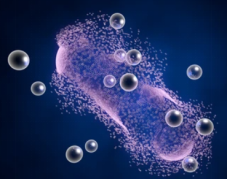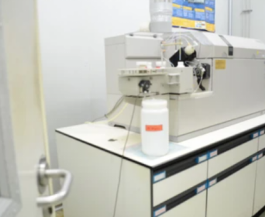
The discharge of large amounts of chemicals into water bodies can have effects that are difficult to predict. Various contaminants such as heavy metals, pesticides, nitrogen, phosphorus, anionic surfactants, and detergents can be detected in the water column, all of which can have adverse effects on human health, aquatic animals, and ecosystems. Lifeasible can perform silver nanoparticle testing in mollusks, including sample pre-treatment, ICP-MS, and SEM analysis, to effectively analyze silver nanoparticles in mollusks and to better develop environmental monitoring techniques.
Silver nanoparticles possess innovative physicochemical properties such as high electrical and thermal conductivity, surface-enhanced Raman scattering, chemical stability, catalytic activity, and nonlinear optical behavior. Ag NPs also possess bactericidal, fungicidal, and antibacterial activities. They are commonly used in agricultural products, detergents, cosmetics, food and beverages, medical devices, and textiles. As a result of all these applications, there is an increased presence of silver nanoparticles in the environment, especially in coastal marine environments. When NPs are in the ocean, they will interact with marine organisms. Mollusks are filter feeders that meet large amounts of seawater and can handle microalgae, bacteria, sediments, and natural NPs. They accumulate different chemicals in their tissues, and therefore they are well-known as environmental bioindicators.
Selection of the molluscan tissue fraction to be tested. The test fraction is placed in a Teflon reactor. Then water, nitric acid, and the appropriate amount of H2O2 are added separately, and the digestion is performed by microwave digestion apparatus, and the digested liquid is diluted with water. The acid digests were stored in clean plastic tubes at room temperature before ICP-MS measurements. Three replicate experiments were performed for the samples to be tested.
Ag NPs were measured using sp-ICP-MS. The counting and classification of NPs required measuring parameters such as injection flow rate and transmission efficiency (TE%). Nanoparticles were counted and graded using sp-ICP-MS using 0, 5, 10, 15, and 20 μg L-1 ionic silver standard solutions for aqueous calibration. Prior to an analysis by sp-ICP-MS, all dilutions were sonicated in an ultrasonic water bath for 5 min.

SEM measurements were performed using a carbon-coated grid (10 μL drops of cleaned/treated enzyme extract and air-dried at room temperature).
Tissues from soft-bodied animals were ablated by testing whether the ablation procedure affects the stability (concentration and size distribution) of Ag NP and analyzed by sp-ICP-MS followed by SEM.
Statgraphics Centurion XVI v16.1.15 software was used for statistical evaluation. Cochran C-test was used for standard deviation comparisons (95% confidence range). When the Cochran C test revealed statistically significant differences between standard deviations, a multiple-range test was applied to compare means. Otherwise, when no statistically significant differences in standard deviations were observed, multiple range tests and ANOVA were used.
If you are interested in our services, or if the service you want is not listed, please feel free to contact us, and we will get back to you as soon as possible.
Reference